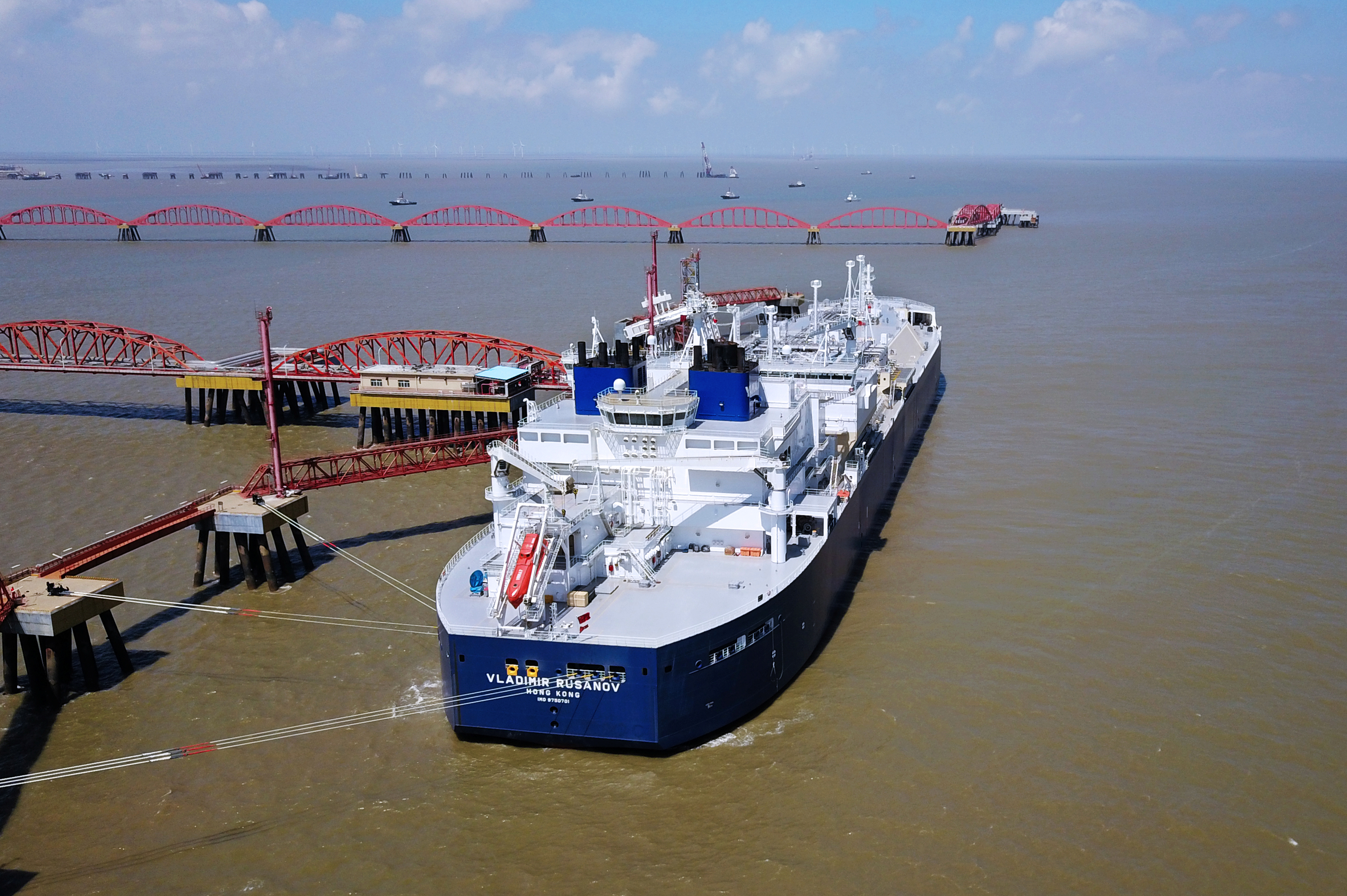China just received its first LNG shipment to arrive directly from the Russian Arctic by ship
The voyage from Yamal in Russia's Arctic cut nearly 20 days off the time it would've taken via the Suez canal route.

A liquified natural gas shipment arrived in China from Russia’s Yamal LNG project via the Northern Sea Route for the first time on Thursday, a trip that cut shipping time by almost half compared to traditional routes.
Chinese media hails the delivery as a “new page” for Russia’s LNG exports to China.
Two LNG tankers, Vladimir Rusanov and Eduard Toll, carrying more than 170,000 cubic meters of LNG left Russia’s northern port, Sabetta, in late June, reaching the Bering Strait in early July.
This new shipping route saved gas supplier Novatek almost 20 days shipping time to China, as well as the fees incurred on the westward route via Suez Canal.
Novatek, the Russian natural gas producer which operates the Yamal LNG plant, said that a ceremony was held at the Chinese port of Jiangsu, a province north of Shanghai, to commemorate the arrival of the two tankers, Reuters reported.
According to China’s National Energy Administration, the country’s National Petroleum Corp (CNPC) will start shipping at least 3 million tonnes of LNG from Yamal in 2019, once the second and third liquefaction trains at the Yamal LNG project are up and running. Analysts expext a much higher volume of LNG cargo to be shipped to Asia via the Northern Sea Route in the future.
Regular shipping through the Northern Sea Route is made possible because of climate change, with with receding sea ice in the Arctic Ocean allowing ships to sail the Northern Sea Route unaccompanied between June and November.
Such ships so still encounter scattered ice, however. Vladimir Rusanov and Eduard Toll, the two ships that made this week’s historic delivery, are two of the five LNG tankers that are equipped to sail in ice as thick as 7 feet (2 meters). Ten more are under construction.